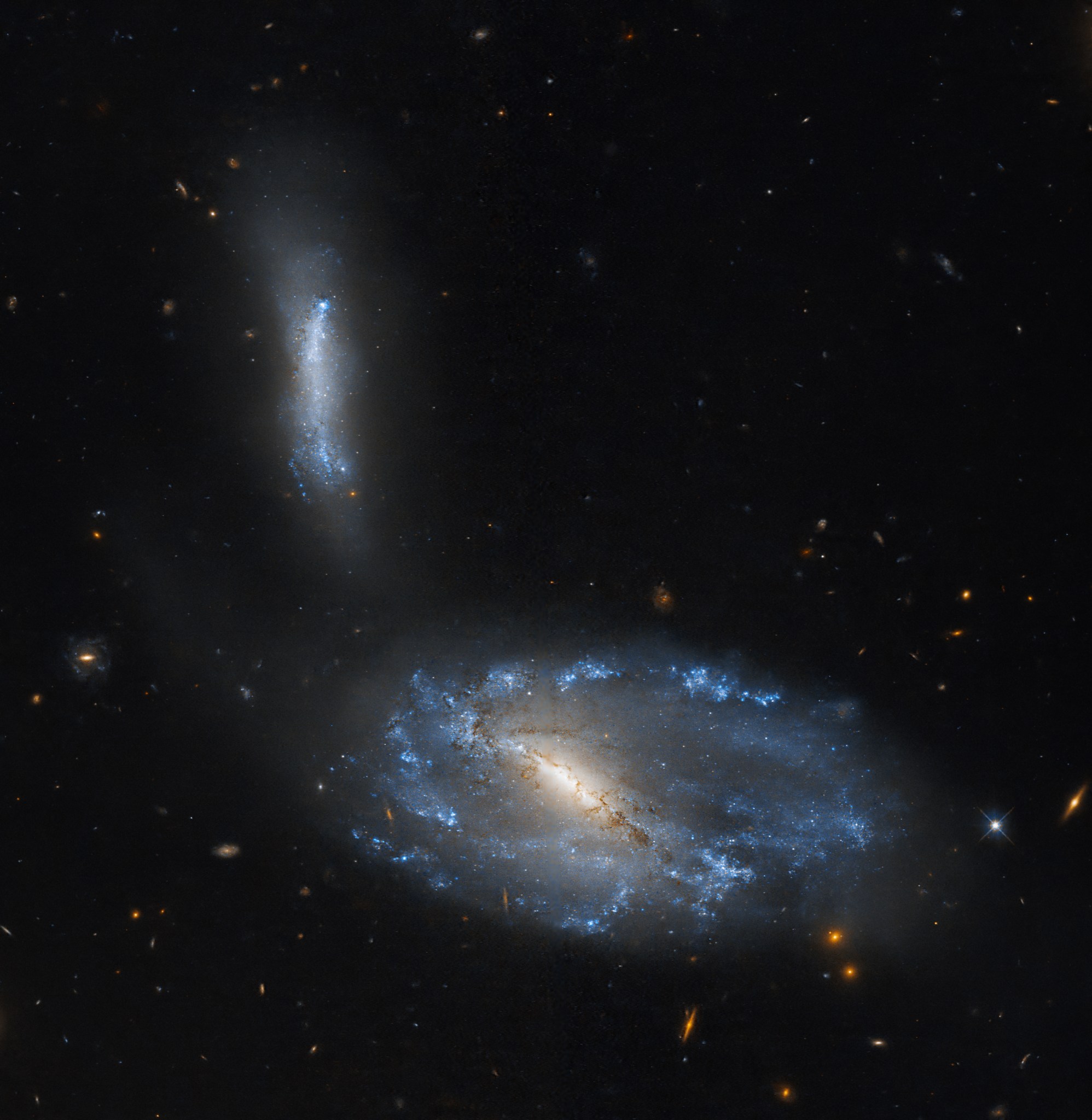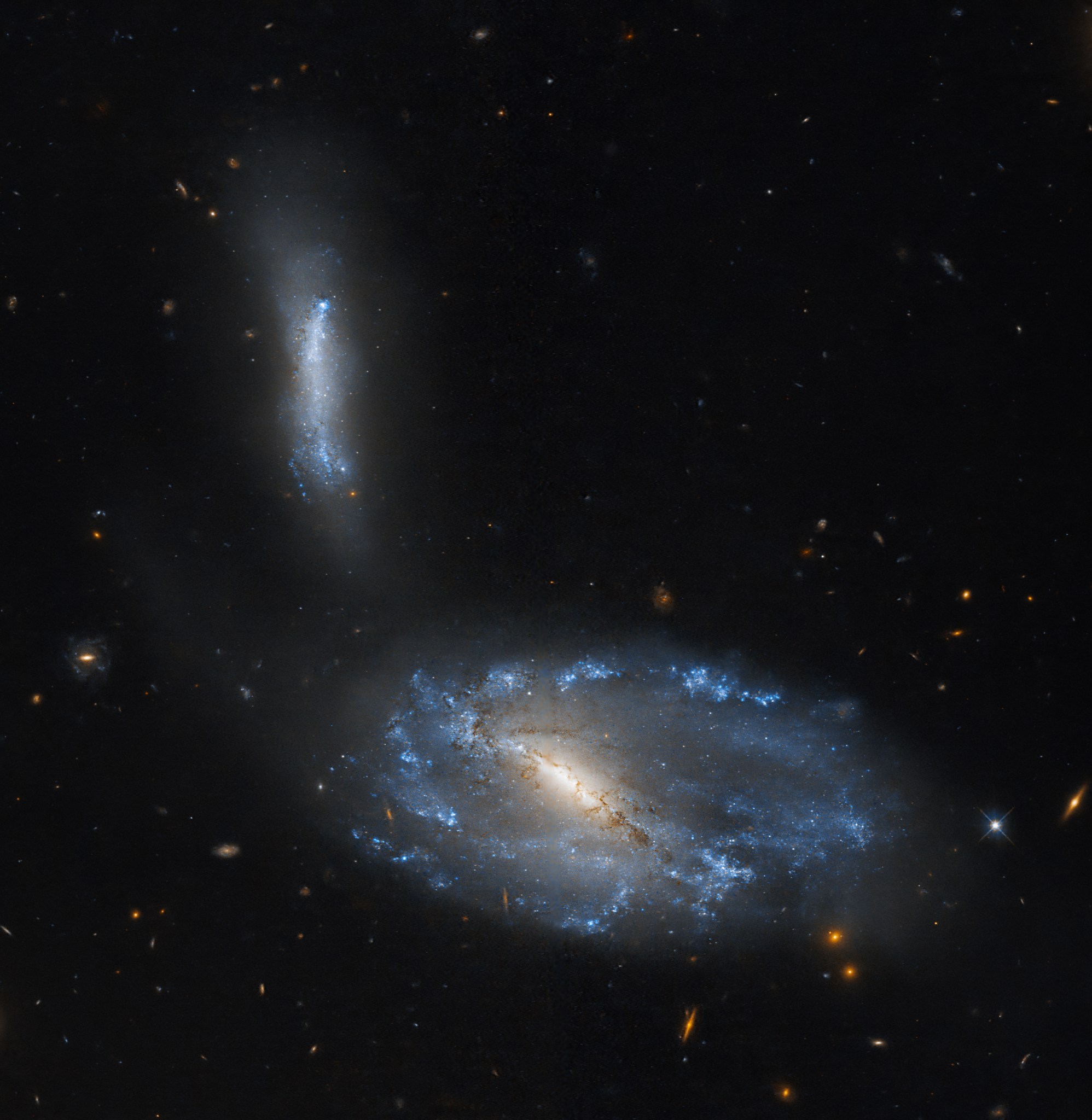1 min read
Hubble Studies a Sparkling Galaxy Pair

A pair of small, interacting galaxies shine in this new NASA Hubble Space Telescope image. The larger of the two galaxies is named NGC 5410 and was discovered in 1787 by British astronomer William Herschel. It spans 80,000 light-years across and has a bright white bar of stars at its center. It is also a spiral galaxy with a medium-sized nucleus and spread-out arms. NGC 5410 contains many young, blue star clusters, especially along its arms.
The smaller of the two galaxies is called UGC 8932 or PGC 49896 and has a diameter of 60,000 light-years. It has a bright blue bar of stars at its core, indicating that it contains younger stars. Its shape is irregular, likely due to distortions from NGC 5410’s gravitational pull.
The pair lies 180 million light-years away in the Canes Venatici constellation and can be seen from the northern hemisphere. Between the two galaxies lies a stream of stars, almost like a bridge, caused by their interaction.
Hubble imaged this galaxy in 2023 to examine if interactions between dwarf galaxies create reservoirs of particles that fuel star formation.
LEARN MORE:
Media Contact:
Claire Andreoli
NASA’s Goddard Space Flight Center, Greenbelt, MD
claire.andreoli@nasa.gov







